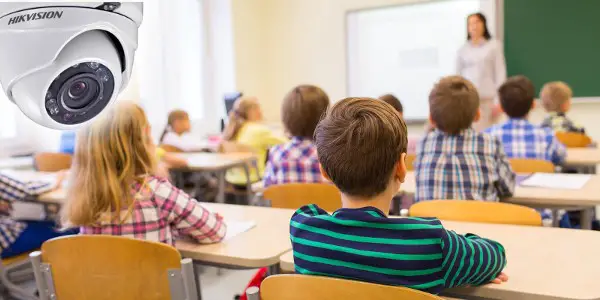The monitoring of people through the wide use of CCTV, or closed-circuit surveillance television, is on the increase worldwide and so too in schools and in classrooms to monitor student behavior and for safety purposes, but also to measure teacher performance.

Benefits of monitoring
Proponents of CCTV in the classroom say it is essential for school security and a helpful tool to monitor students to ensure that no one is engaging in inappropriate behavior. They also contend that it helps school management to identify potential problems, improves discipline, and is important for school safety.
The observation of classes prompts teachers to function professionally or at least improve their practice.
The benefits of using CCTV cameras in the classroom include:
- Reducing bullying and anti-social behavior
- Increased security
- Providing camera footage to solve disputes
- Examples of problem behavior for parent interviews
- Evidence in disciplinary hearings
- Monitoring staff performance
- Improves teacher safety.
Other benefits when teaching is not in progress include:
- Control of unauthorized access
- Deterring vandalism
- Reducing crime during school closures
- Insurance claims
Negatives of monitoring
Being observed naturally causes stress and anxiety for people and more so with teachers. It impedes natural communication and teaching methods, such as alternating class activities, using games or humor, having a light hearted fun as part of the group work. This may seem all seem to the parent or an uninformed observer as if the teacher is “not working.”
Full-time observation can also be costly, especially if a number of trained observers are needed. There are many management strategies for reducing the costs of observation. For example, inexpensive monitoring equipment may be used to monitor just events or observations.
The biggest drawback of using CCTV in classrooms and school grounds, in general, is the intrusion of privacy. Students, parents, and teachers may object to being filmed under constant surveillance. This dynamic may have a negative impact on the social functioning of the classroom. Children should be allowed to be vulnerable and make mistakes. When a camera is ever-present, that comfort level is taken away.
Technology allows more than one surveillance point and some parents may want access to the footage, which brings up a whole other debate regarding the use of surveillance in classrooms.
If observed out of context and by persons ignorant of teaching methods then some classroom activities may create a wrong impression. Students should enjoy classes and that includes doing fun activities, having
The importance and impact of cameras in our society cannot be denied. Photographs and video have become vital to communication, education, and preservation of history. As the education community has evolved with technological breakthroughs throughout the decades, this is just another stepping stone and will eventually become part of every educator’s arsenal.
Summary
CCTV should be seen as another tool for educational purposes and used as such in the classroom. Rather than fear the omnipresent, ever-watching cameras, students and teachers should embrace it and make it part of their teaching plans.